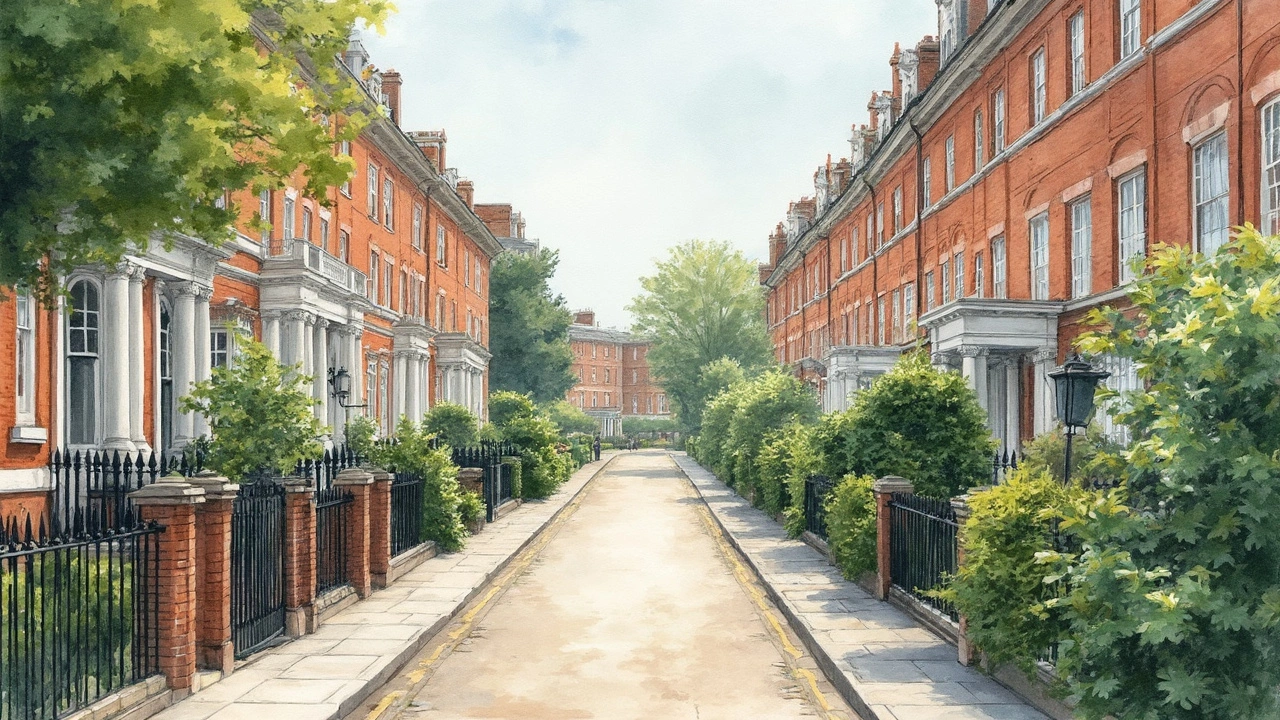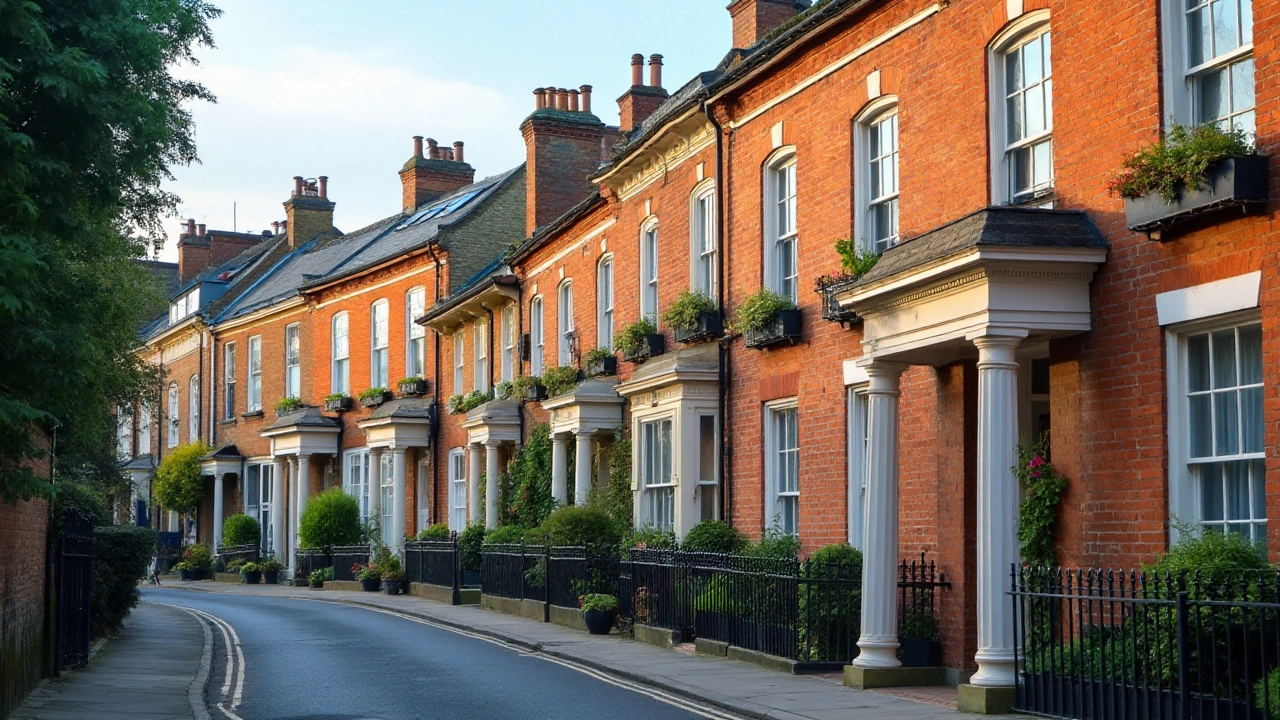Historical Design: How Old Styles Shape Today's Buildings
Some modern buildings still wear ancient DNA: a Roman arch sneaking into a civic plaza, a Gothic window reimagined in a coffee shop. Historical design isn't just museum stuff—it's a toolbox you can use when you renovate, travel, or just want to understand why a street looks the way it does.
This tag collects pieces on styles that shaped cities for centuries. From Ancient Roman engineering and Byzantine domes to Georgian townhouses, each era left clear marks: arches, columns, domes, ornate facades, or simple, honest craft. Knowing those marks helps you spot influences fast and make smarter design choices.
Why historical design matters today
Old styles still solve real problems. Roman concrete and arches controlled loads so builders could span big spaces. Georgian symmetry helped planners create readable streets. Craftsman details focused on good joinery and human scale. When you borrow from history, you borrow tested solutions—if you keep scale and context in mind.
Heritage also shapes identity. A town with Greek Revival courthouses reads as civic and stable. Baroque interiors make a room feel dramatic and formal. Those feelings matter for cities, museums, homes, and even brand design. You can use historical cues to give a place authority, warmth, or whimsy.
How to spot and use historical design
Want quick tips? Look for big clues: columns = Greek or neoclassical, rounded arches = Romanesque or Roman, pointed arches and tracery = Gothic, sweeping ornament and curves = Baroque or Rococo. Roof shape tells stories too—gambrel roofs point to Dutch Colonial Revival, while domes speak Byzantine or Renaissance.
When adding historic touches, match scale and material. A tiny plaster cornice on a modern glass box will look fake. Instead, use proportionally sized moldings, real wood trim, or tile patterns that read as honest details. For interiors, mix a single strong element—an arched doorway, stained glass panel, or decorative tile—with simpler modern surfaces to keep things balanced.
Preservation matters if you work on actual heritage buildings. Start by researching the style and original materials. Repair rather than replace when possible. For example, repair lime-based mortar in masonry rather than swapping in hard Portland cement; the softer mortar protects old stone. When restoration needs new pieces, match craft and finish so additions read as one project, not a pastiche.
Finally, use travel and observation. Read posts about Roman hidden gems, Gothic spires, Beaux-Arts details, or Art Nouveau flourishes to train your eye. Take photos of proportions you like and note materials. Historical design becomes useful once you can name the element, understand its purpose, and choose where it actually helps your space.
Want a starting place? Pick one era you love, study three signature features, and try one small retrofit at home. That hands-on approach teaches more than any textbook and keeps historical design alive and practical.

Colonial Architecture: Exploring Timeless Styles and Historical Influence
Explore the rich world of colonial architecture—its styles, history, and legacy. Learn fun facts, useful tips, and why colonial homes are still beloved today.
Read more
Exploring Georgian Architecture: A Study in Balanced Design
Georgian architecture, named after the British monarchs of the 18th and early 19th centuries, is celebrated for its emphasis on symmetry and proportions. This style, marked by its classic elegance and restrained decor, incorporates the harmonious use of mathematical ratios that reflect the ideals of the Enlightenment period. Through careful analysis of Georgian architectural elements such as windows, columns, and brickwork, we uncover the timeless appeal that continues to influence modern design today. This article provides an engaging exploration into the characteristics and enduring charm of Georgian architecture.
Read more
Why Federal Architecture Still Inspires Modern Designers
Federal architecture, with its balanced proportions and classical elements, continues to influence modern designers. Rooted in the late 18th and early 19th centuries, this style is characterized by its elegance, symmetry, and use of Roman and Greek elements. The enduring appeal of Federal architecture lies in its timeless aesthetic, attention to detail, and its ability to convey a sense of history and stability. In this article, we'll explore the fundamental principles of Federal architecture, its notable characteristics, and its lasting impact on contemporary design.
Read more
Why Gothic Revival Architecture Matters in Modern Times
Gothic Revival architecture reemerged in the 19th century and is still influencing modern design. This style's unique blend of historical elegance and contemporary practicality offers timeless appeal. From churches to homes, its striking features continue to inspire both architects and homeowners. Explore the enduring relevance of Gothic Revival's ornamental flair, structural innovations, and cultural significance in today's built environment.
Read more
Federal Architecture: Elegance and Symmetry Embodied
Federal architecture, rooted in the late 18th and early 19th centuries in America, exemplifies elegance and symmetry. This article delves into its distinctive characteristics, notable examples, and tips on identifying and appreciating this architectural style. Through detailed insights, readers will understand the cultural and historical significance of Federal architecture.
Read more
Italianate Architecture: Classic Beauty Redefined
Italianate architecture has captivated many with its timeless charm and grace. Rooted in the romantic villas of Italy, this architectural style redefines aesthetics with its unique features. Discover the history, key elements, and tips on how to incorporate this distinctive design in modern contexts. A deep dive into the lasting influence and beauty of Italianate architecture.
Read more
The Charm of Dutch Colonial Revival Architecture: An Illustrated Exploration
Hey there! I'm so excited to share with you an absolute gem of architectural style - the Dutch Colonial Revival. It's like taking a stroll through history, with captivating gambrel roofs and cozy, inviting porches that beckon you to stay awhile. These homes are more than just structures; they're stories told through bricks and mortar, with every quaint dormer window and elegant double-hung sash whispering tales of the past. So, join me on this visual journey where I'll be your guide through the quaint elegance of these historic beauties. It's like a treasure hunt for the eyes, and I can't wait to show you all the details that make Dutch Colonial Revival architecture a true classic.
Read more